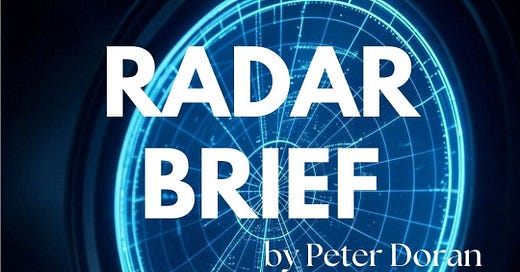It’s showtime. Reports surfaced over the weekend that President Donald Trump and Russian President Vladimir Putin could speak again as early as Tuesday, March 18, to negotiate a ceasefire in Ukraine.
The potential call follows a “positive” Moscow meeting between Putin and U.S. envoy Steve Witkoff on March 13. Trump, touting a “very good chance” to end the war, claimed on social media that Putin had agreed to spare Ukrainian troops in Kursk if they surrendered. The Kremlin, while cautiously optimistic in a message to Trump, hasn’t confirmed the call, leaving both its timing and outcome uncertain.
The stakes are high, but the Kremlin is likely playing diplomatic games.
The upcoming call with Putin, if it occurs this week, will be another major test of Trump’s dealmaking skills, with European leaders set to weigh in if the call happens before the European Council Summit on March 20–21.
Trump wants a quick resolution to the war—aligning with his campaign promises—but Putin has little incentive to rush. With a recent operational uptick on the Kursk front (“Putin orders army to eject last Ukrainian troops from Russian territory”), Moscow may delay, keeping Washington at the table while tightening the screws on Kyiv.
Putin’s “Peace” Demands Aren’t About Peace—They’re About Control
Polish and European analysts are drawing close comparisons between Putin’s negotiating tactics and Lenin’s peace ploys during the Soviet invasion of Poland in 1920. They note how Lenin’s demands—Poland’s “demilitarization” and a puppet government in Warsaw—weren’t about peace but surrender. Putin’s proposals today follow the same blueprint, wrapped in diplomatic language but designed to force Kyiv into submission.
As detailed by the Institute for the Study of War (ISW), Russia’s ceasefire terms look more like surrender than a step towards peace. Notably, the Russian side is asking for sweeping territorial and political concessions from Ukraine.
Moscow demands Kyiv cede all of Luhansk, Donetsk, Zaporizhzhia, and Kherson—including areas not currently under Russian control—while recognizing Crimea as Russian territory.
Ukraine would also be forced into neutrality, barred from NATO or any military alliances, and stripped of long-range missiles and foreign weapons. On top of that, Russia insists on “denazification”—a euphemism for regime change in Kyiv.
Based on its demands, the Kremlin looks primed to reject ceasefire proposals that don’t align with these maximalist goals, including a U.S.-Ukraine plan from Jeddah. Moscow frames its demands as addressing “root causes” of the conflict—NATO expansion and alleged discrimination against ethnic Russians—while seeking to exclude Western influence from negotiations. The strategy is clear: sideline Ukraine, pressure Washington, and lock in Russian dominance.
The real question is whether Trump, always the self-styled dealmaker, will see Putin’s game for what it is—a ploy to buy time, weaken Kyiv, and keep Washington on the defensive.
Did Trump Promote Kellogg or Sideline Him?
Finally, Washington is buzzing this week over a curious question: Was General Keith Kellogg promoted or pushed aside? After a string of public missteps, Trump announced that Kellogg would now serve as his Envoy to Ukraine. Previously, Kellogg was the Special Envoy for Russia-Ukraine peace talks—a distinction that may or may not mean a shift in power.
The role of a presidential envoy has always been about perception. In the 1990s, Richard Holbrooke turned his special envoy status into a battering ram during the Balkan crises, dropping hints of Oval Office calls—real or exaggerated—to strong-arm Balkan leaders into negotiations. His influence wasn’t just about the title but the belief that he had Clinton’s ear at any moment.
Does Kellogg’s new title give him more clout, or is it a polite way of sidelining him? It looks more like a demotion, but in Trump’s White House, power is fluid. The jury’s still out.







